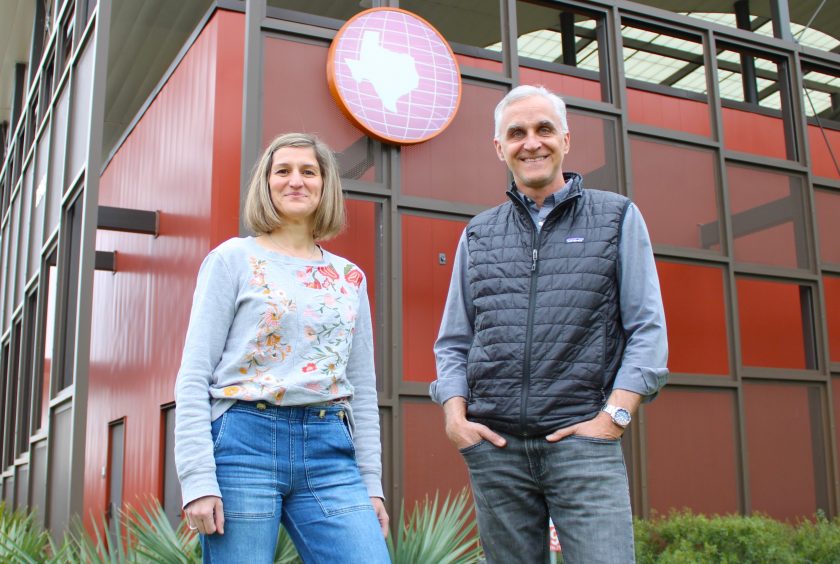Catalysts Could Make Producing Hydrogen From Rocks a Reality
December 8, 2024
In a project that could be a game changer for the energy transition, researchers at the Bureau of Economic Geology are exploring a suite of natural catalysts to produce hydrogen gas from iron-rich rocks without emitting carbon dioxide. If the scientists are successful, the project could jump-start a brand-new type of hydrogen industry: geologic hydrogen.
“We’re producing hydrogen from rocks,” said Toti Larson, a research associate professor at the bureau and lead researcher on the project. “It’s a type of non-fossil fuel production of hydrogen from iron-rich rocks that has never been attempted at an industrial scale.”
The research is one of 16 projects funded by a $20 million U.S. Department of Energy initiative focused on geologic hydrogen. The bureau researchers are collaborating with scientists at the University of Wyoming’s School of Energy Resources to explore the feasibility of this process on different rock types across the United States.
The natural catalysts that the researchers are studying contain nickel and platinum group elements. They work by stimulating a natural geologic process called “serpentinization,” which involves iron-rich rocks releasing hydrogen as a byproduct of chemical reactions. Although serpentinization usually occurs at high temperatures, the catalysts would enable the reaction to occur at lower temperatures and at depths easily accessible to today’s technology.
Researchers have already conducted successful tests at the laboratory scale. The next step is to scale up the experiments and test the process on a broad range of iron-rich rock types found across North America. Locations include basalts from the Midcontinent Rift in Iowa, banded iron formations in Wyoming and ultramafic rocks in the Midwest.

